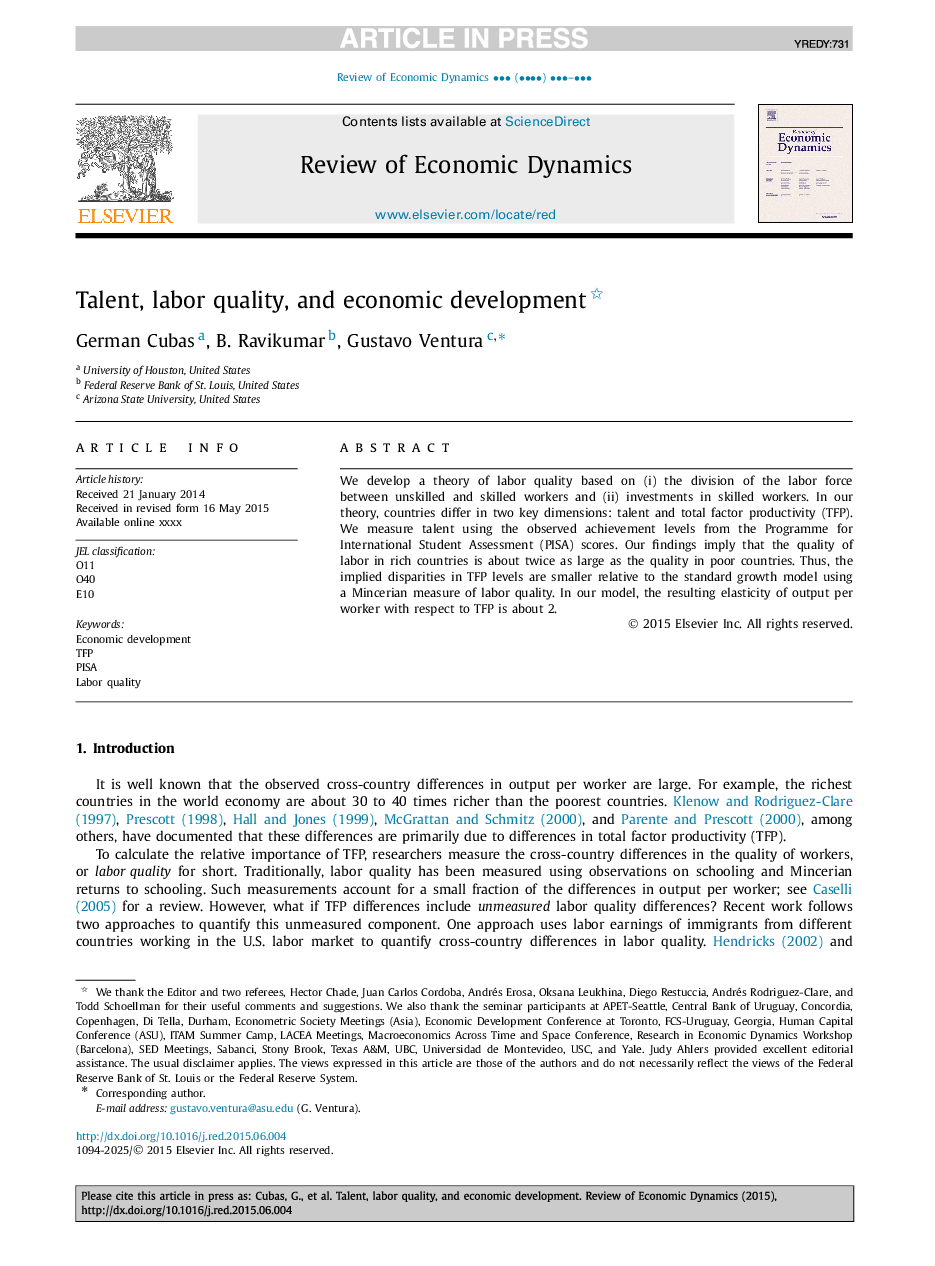| Article ID | Journal | Published Year | Pages | File Type |
|---|---|---|---|---|
| 7388283 | Review of Economic Dynamics | 2016 | 22 Pages |
Abstract
We develop a theory of labor quality based on (i) the division of the labor force between unskilled and skilled workers and (ii) investments in skilled workers. In our theory, countries differ in two key dimensions: talent and total factor productivity (TFP). We measure talent using the observed achievement levels from the Programme for International Student Assessment (PISA) scores. Our findings imply that the quality of labor in rich countries is about twice as large as the quality in poor countries. Thus, the implied disparities in TFP levels are smaller relative to the standard growth model using a Mincerian measure of labor quality. In our model, the resulting elasticity of output per worker with respect to TFP is about 2.
Related Topics
Social Sciences and Humanities
Economics, Econometrics and Finance
Economics and Econometrics
Authors
German Cubas, B. Ravikumar, Gustavo Ventura,
